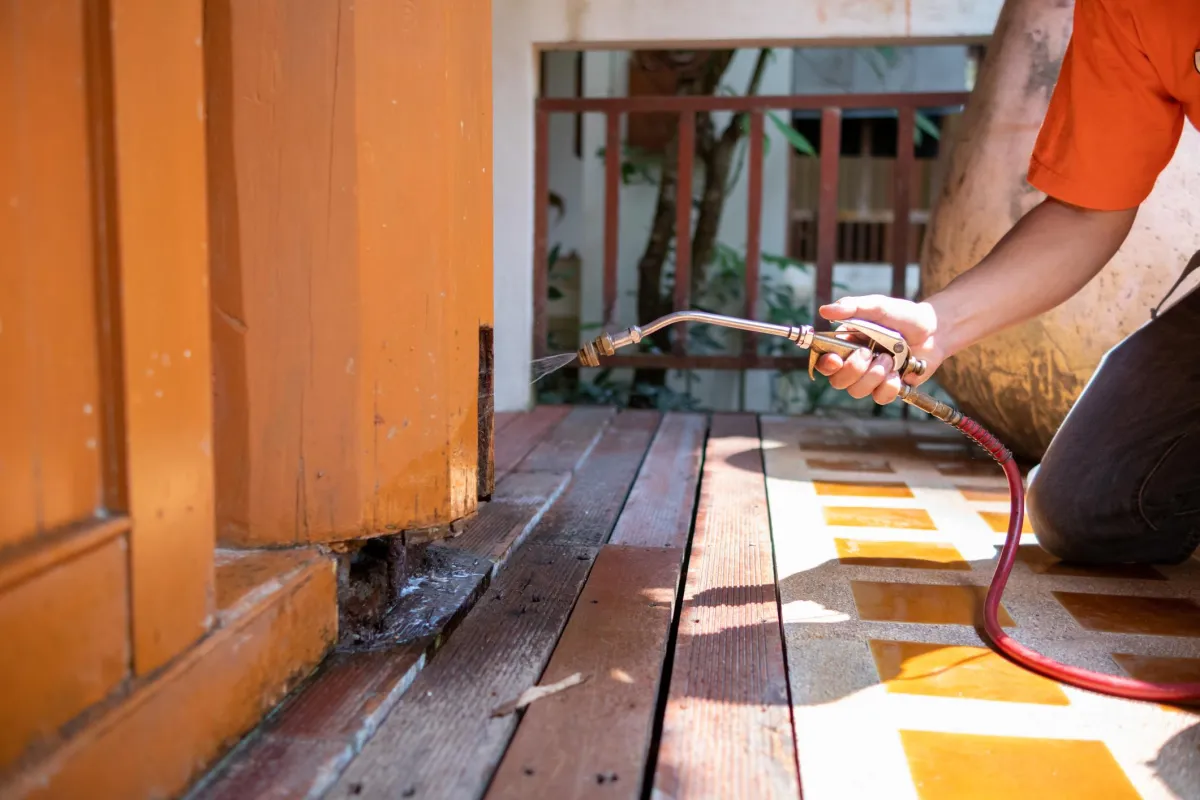
What are the most effective ways termite pest control prevents costly damage?
Termite pest control is one of the most effective ways to prevent costly and devastating damage to homes and commercial properties. Unlike many other pests, termites work silently, consuming wood, insulation, paper, and other cellulose-based materials around the clock. Because they often remain hidden behind walls, under floors, or in crawl spaces, infestations can go unnoticed until significant structural damage has already occurred.
Investing in professional termite control safeguards property, reduces repair costs, and maintains both safety and long-term value. Whether for a family home or a commercial building, preventive pest control ensures that this destructive pest never has the chance to compromise structural integrity.
How Termite Control Protects Your Property
1. Prevents Structural Damage
Subterranean and drywood termites are notorious for destroying wooden beams, flooring, and furniture. Over time, they can even compromise foundations and support walls. Professional termite treatments are designed to stop infestations early—before termites cause irreparable damage to the skeleton of a building. By intervening quickly, property owners avoid expensive repairs and the safety risks associated with weakened structures.
2. Protects Valuable Belongings
Termites don’t just target structural wood; they also feed on household items and commercial assets. Wooden furniture, cabinets, bookcases, and even important paper documents are all vulnerable to termite activity. Professional termite control preserves these valuable items, ensuring both personal and business investments remain intact.
3. Reduces Long-Term Financial Costs
Ignoring termites is a costly mistake. In the United States alone, termite damage costs property owners billions of dollars annually. A single infestation can result in tens of thousands of dollars in repairs. Preventive pest control is far more cost-effective than repairing widespread damage once termites have taken hold.
4. Maintains Property Value
A termite infestation can dramatically reduce property resale value. Prospective buyers often require termite inspection reports, and visible damage can lead to reduced offers or failed sales. Regular inspections and documented treatments provide peace of mind to buyers and reassure them that the property is safe and well-maintained.
5. Ensures Safety
Beyond financial loss, termite damage can create hazards for occupants. Floors may sag, ceilings may buckle, and weakened beams may pose collapse risks. Termite control protects the people who live or work inside by preventing accidents caused by compromised structures.
Effective Termite Pest Control Methods
Professional termite management involves a combination of strategies that address both current infestations and future risks.
Chemical Treatments
Soil treatments: Liquid termiticides are applied around building foundations to form protective barriers that repel or eliminate termites.
Wood treatments: Wood preservatives and surface applications shield furniture and structural timber from termite attack.
Bait Systems
Termite bait stations are strategically placed around the property. Termites feed on the bait and carry it back to the colony, effectively eliminating the entire population over time.
This method targets colonies at their source rather than just treating visible activity.
Physical Barriers
During construction, stainless steel mesh or sand barriers can be installed to block subterranean termites from entering.
These non-chemical options are environmentally friendly and highly effective as preventive measures.
Inspection and Monitoring
Regular inspections identify telltale signs such as mud tubes, hollow-sounding wood, or discarded wings.
Ongoing monitoring ensures early detection before damage becomes widespread.
Moisture Management
Termites thrive in damp environments. Fixing leaks, improving drainage, and ensuring proper ventilation reduces the likelihood of infestations.
Dehumidifiers and proper insulation can further discourage termite activity in basements, attics, and crawl spaces.
Signs a Property May Need Termite Control
Hollow-sounding wood that breaks easily.
Mud tubes along foundations, walls, or crawl spaces.
Discarded wings near windows or doors after termite swarming.
Sagging or buckling floors and ceilings.
Tiny piles of frass (termite droppings) around wooden surfaces.
Early detection and treatment are critical to minimizing long-term damage.
Seasonal Considerations for Termite Control
Spring and Summer: Swarming season, when reproductive termites leave colonies to mate, is the most common time infestations are discovered.
Fall and Winter: Subterranean termites remain active indoors, often hidden in walls, basements, or flooring.
Year-Round Monitoring: Because termites feed continuously, prevention and inspections should never be seasonal—they are necessary throughout the year.
Benefits of Professional Termite Control
Comprehensive protection – Tailored solutions that combine chemical, bait, and physical methods.
Long-term prevention – Scheduled treatments and inspections stop infestations before they start.
Peace of mind – Homeowners and business owners can feel confident their property is secure.
Cost efficiency – Preventing damage saves far more money than repairing destruction later.
Health and safety – Professional-grade products are applied safely, avoiding risks associated with DIY chemicals.
Tips for Property Owners to Support Termite Control
Property owners can take proactive steps to strengthen protection, including:
Removing firewood, mulch, and wood debris stored near foundations.
Fixing leaks quickly and maintaining proper drainage systems.
Ventilating crawl spaces, basements, and attics to prevent excess moisture.
Inspecting wood furniture and fixtures for signs of termite damage.
Scheduling annual or semi-annual professional termite inspections.
These practices work hand-in-hand with professional pest control to minimize risks.
Final Thought
Termite pest control is not just a precaution—it is a critical investment in the safety, value, and longevity of homes and commercial properties. By combining chemical treatments, bait systems, physical barriers, inspections, and moisture management, professional pest control delivers comprehensive protection.
Ignoring termite threats can lead to costly repairs, lost property value, and serious safety concerns. In contrast, proactive termite management ensures that infestations are caught early and resolved effectively.
Investing in termite pest control means more than eliminating pests—it’s about preserving property, protecting financial investments, and maintaining a safe, healthy environment year-round.